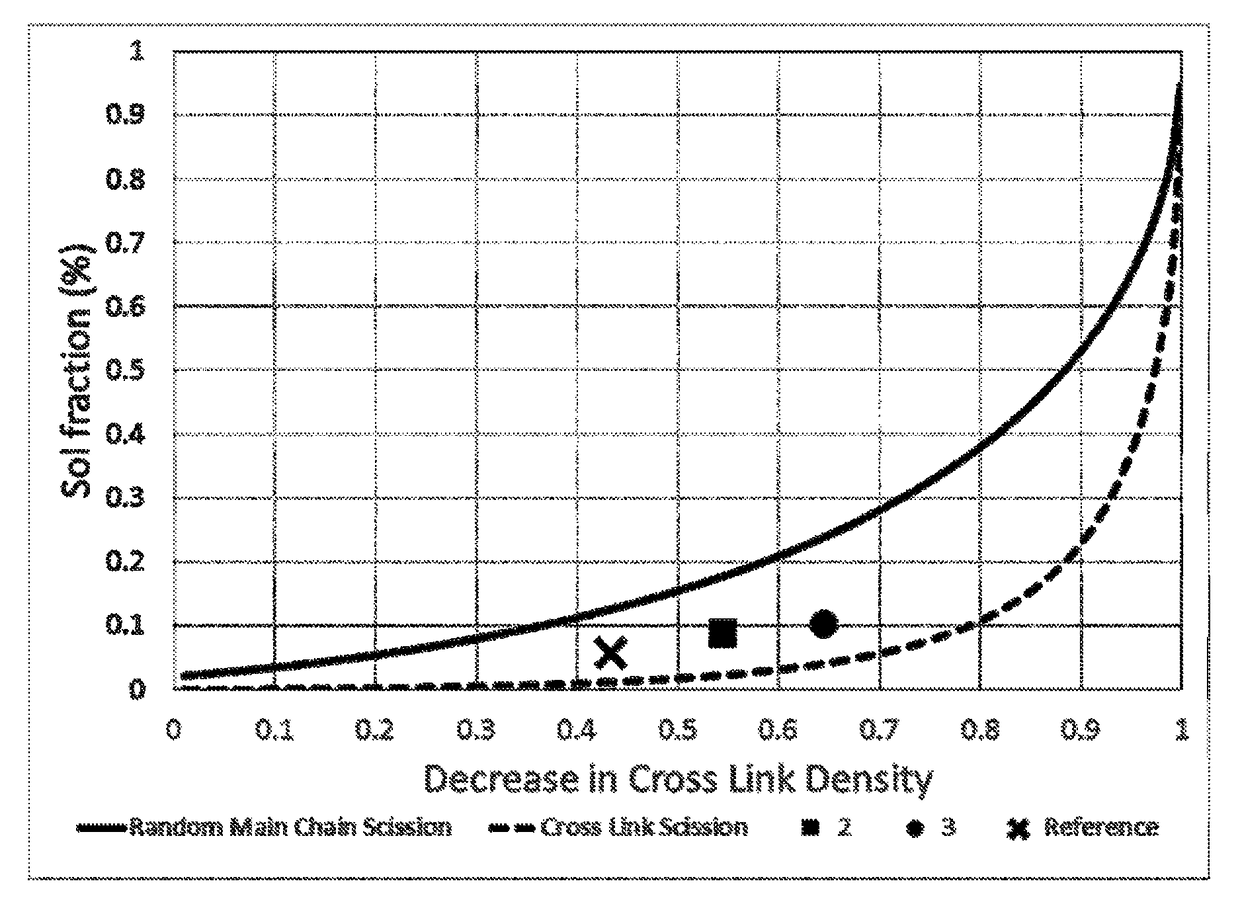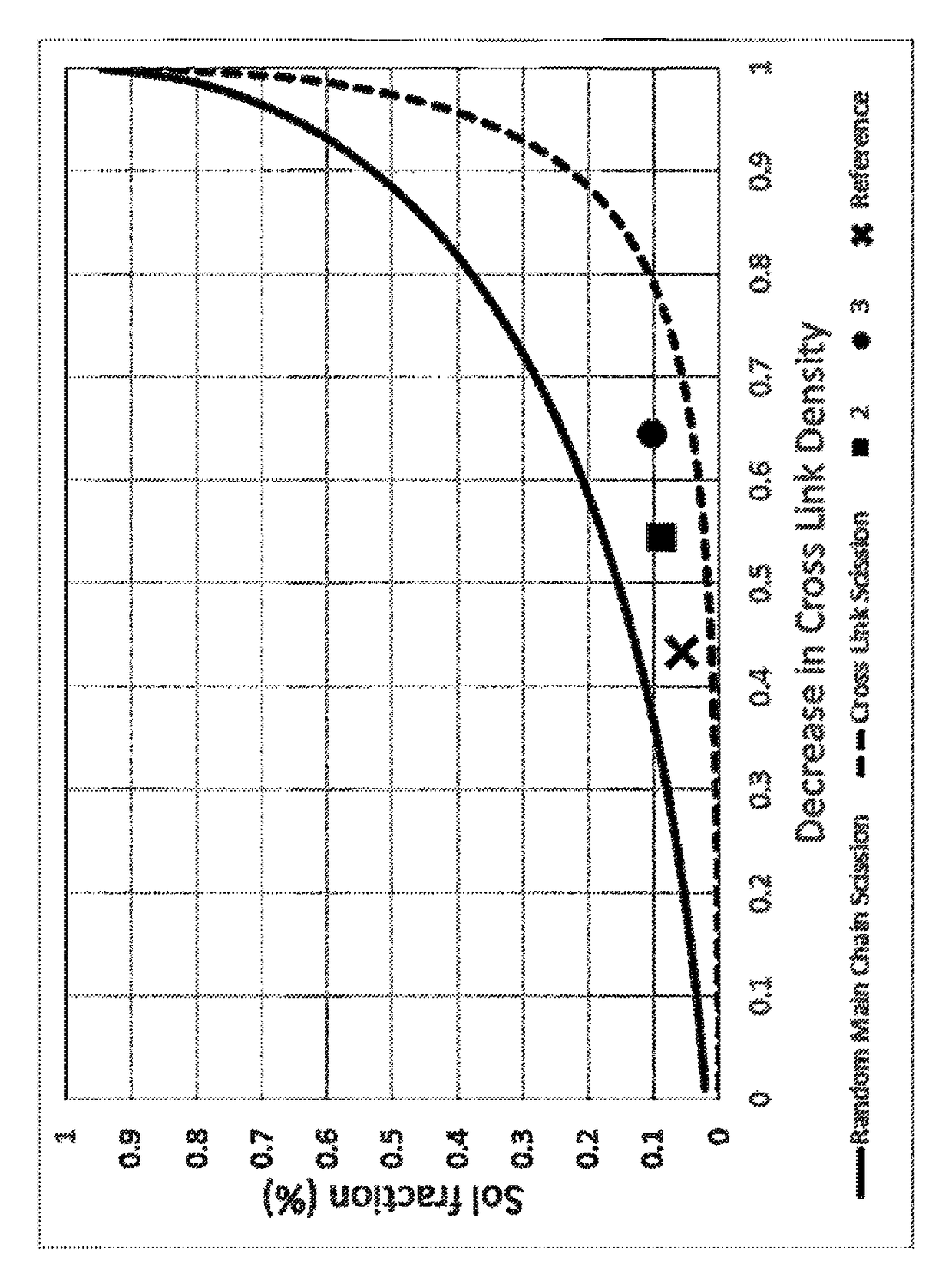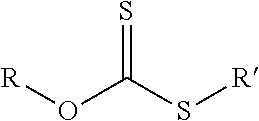Chemically functionalized renewed rubber composition
a technology of chemical functionalization and composition, which is applied in the direction of special tyres, transportation and packaging, tyre beads, etc., can solve the problems of hoses, hoses, hoses, and simply discarded or burned hoses and belts, and achieves low hysteretic properties, low rolling resistance, and improved energy consumption efficiency
- Summary
- Abstract
- Description
- Claims
- Application Information
AI Technical Summary
Benefits of technology
Problems solved by technology
Method used
Image
Examples
examples 1-4
[0049]In this series of experiments, a micronized rubber powder was functionalized in accordance with this invention to make a chemically functionalized renewed rubber composition. In the procedure used, 200 grams of micronized rubber powder which had a particle size of 30 mesh was treated in a first stage with the chemicals outlined in Tables 1 and 2. This composition was allowed to sit overnight. The mixture was then passed through a 2-roll mill at a gap of 100 microns. The cooling system of the 2-roll mill was set at 35° C. The composition was passed through the mill for several passes until the mixture became homogeneous. Once the composition became homogeneous, CTP was then added in the amounts outlined in Tables 1 and 2.
[0050]
TABLE 1Amounts of functional agent process aids, and stabilizer added to Examples 1-3.MRP SizeMRPTBzTDDPGExample #(Mesh)(g)(phr)(phr)Oil (phr)CTP (phr)1Aged Tire tread0000230200209.11.5330200139.11TBzTDT = Tetrabenzylthiuram disulfideDPG = N,N′-diphenyl g...
examples 5-23
[0060]In this series of experiments, a micronized rubber powder was functionalized in accordance with this invention to make a chemically functionalized renewed rubber composition. In the procedure used, 200 grams of micronized rubber powder which had a particle size of 80 mesh (except example 22 which was 40 mesh) was treated in a first stage with the chemicals outlined in Table 6. This composition was allowed to sit overnight. The mixture was then passed through a 2-roll mill at a gap of 100 microns. The cooling system of the 2-roll mill was set at 35° C. The composition was passed through the mill for several passes until the mixture became homogeneous. Once the composition became homogeneous, CTP was then added in the amounts outlined in Table 6.
[0061]
TABLE 6Chemical compositions of Examples 5-23.MRP SizeTBzTDDPGOil (type C-CTPExample #(Mesh)MRP (g)(phr)(phr)100) (phr)(phr)580200409.10680200409.12780200409.13880200409.14980200209.101080200209.111180200209.11.51280200209.12138020...
example 24
mixed at 10 wt % loading level into a carbon black control compound comprised of 70% / 30% blend of emulsion styrene-butadiene rubber and polybutadiene rubber. After being cured with a standard sulfur cure package the cure rheology characteristics of this rubber formulation were determined and are reported in Table 14.
[0076]
TABLE 14Cure rheology characteristics for 10 wt % loading of Example 24 into control compound.Example #MLMHTs1Tc90Control1.5214.634.4112.58Compound241.814.02.47.6
PUM
| Property | Measurement | Unit |
|---|---|---|
| temperature | aaaaa | aaaaa |
| critical temperature | aaaaa | aaaaa |
| pressure | aaaaa | aaaaa |
Abstract
Description
Claims
Application Information
 Login to View More
Login to View More - R&D
- Intellectual Property
- Life Sciences
- Materials
- Tech Scout
- Unparalleled Data Quality
- Higher Quality Content
- 60% Fewer Hallucinations
Browse by: Latest US Patents, China's latest patents, Technical Efficacy Thesaurus, Application Domain, Technology Topic, Popular Technical Reports.
© 2025 PatSnap. All rights reserved.Legal|Privacy policy|Modern Slavery Act Transparency Statement|Sitemap|About US| Contact US: help@patsnap.com



